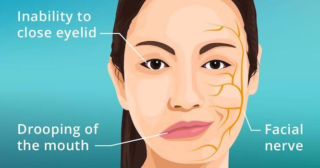CONDITIONS
Medical Conditions we treat:
HEAD
NECK
SHOULDER
WRIST
HIP
KNEE
ANKLE
BACK
ELBOW

Medical Conditions we treat:
- Musculoskeletal Conditions
Joints & Bones
Frozen Shoulder (Adhesive Capsulitis)
Bursitis
Dislocated Shoulder
Post Surgical Rehabilitation
Knee Pain
Osteoarthritis
Condramalacia Patella
Joint Stiffness
Neck & Spine
Neck Pain & Stiffness
Spondylitis
Low Back Pain
Sciatica
Degenerative Disc Disease(DDD)
Herniated Discs(Bulging Discs)/Slipped Disc
Spondylosis
Scoliosis
Piriformis Syndrome
Posture problems
Muscles
Spasm
Fibromyalgia
Rotator Cuff Injuries
De Quervain’s tenosynovitis
Trigger Finger
- Neurological conditions
- Sports injury conditions
Bell’s palsy
Bell’s palsy is a condition that temporarily paralyzes the side of your face. It can affect all or part of the muscles in your face. In rare cases, both sides of your face may be affected. Bell’s palsy occurs when your facial nerve (or 7th cranial nerve) is damaged. The facial nerve carries signals for movement, taste, and other information to and from your face. When this nerve is damaged, the signals between your face and brain do not work as well. While it may seem scary at the time, Bell’s palsy usually doesn’t last long.
Bell’s palsy is not considered permanent, but in rare cases, it does not disappear. Currently, there is no known cure for Bell’s palsy; however, recovery usually begins 2 weeks to 6 months from the onset of the symptoms. Most people with Bell’s palsy recover full facial strength and expression.

Causes
All causes of Bell’s palsy are not known. It may occur when a virus, such as the common cold, makes your facial nerve swell. The swollen nerve presses against the bone around it. This pressure can stop the nerve from working correctly.
You may be more likely to get Bell’s palsy if you are between 15 and 60 years of age or have one of the following:
- Herpes
- Diabetes.
- A common cold.
- The flu.
- High blood pressure.
- Lyme disease.
- Mononucleosis
- HIV or another autoimmune disorder.
- Sarcoidosis.
- Head trauma.
Bell’s palsy affects about 1 in every 5,000 people. Once you have had Bell’s palsy, you have a slight chance of getting it again
Symptoms
These are the most common symptoms of Bell’s palsy:
- Disordered movement of the muscles that control facial expressions, such as smiling, squinting, blinking, or closing the eyelid
- Loss of feeling in the face
- Headache
- Tearing
- Drooling
- Loss of the sense of taste on the front two-thirds of the tongue
- Hypersensitivity to sound in the affected ear (hyperacusis)
- Inability to close the eye on the affected side of the face
Diagnosis
Your healthcare provider can usually diagnose Bell’s palsy by looking at your symptoms. There are no specific tests used to diagnose Bell’s palsy. However, your healthcare provider may order tests to rule out other conditions that can cause similar symptoms and to determine the extent of nerve involvement or damage. These tests may include:
- Electromyography (EMG) to determine the extent of the nerve involvement
- Blood tests to determine if another condition such as diabetes or Lyme disease is present
- Magnetic resonance imaging (MRI) or computed tomography (CT) to determine if there is a structural cause for your symptoms.

